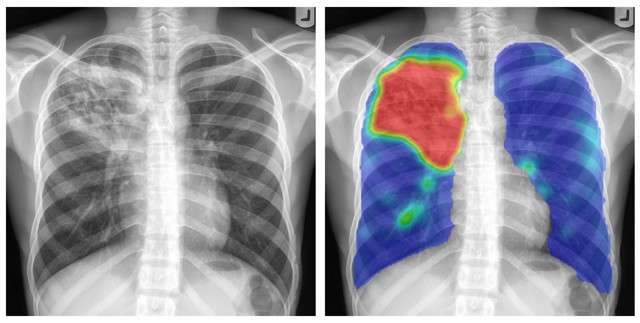Huawei’s TECH4ALL initiative aims to ensure that no one is left behind in the digital world by encouraging digital inclusion programs and boosting the adoption of technology globally. The project is similar to some of the work taking place within academia across Europe, where research projects focus on harnessing technology for the good of society.
Professor van Ginneken, Professor of Diagnostic Imaging Analysis at Radboud University Medical Center in the Netherlands, is introducing digitized healthcare solutions to developing countries and believes that all hospital pathology departments will be digitized in ten years’ time. He talked to Huawei about the work they are doing.
When did you start working in medical imaging?
I studied physics and completed a PhD in diagnostic imaging analysis in 1996, developing computer programs that analyze chest x-rays using artificial intelligence (AI). In the late 1990s we wanted to put digital chest X-rays with AI software in countries where TB was widespread, because it allows for faster and wider screening, without the need to develop images on film. However, x-ray equipment was too expensive at the time.
Bram van Ginneken, Professor of Diagnostic Imaging Analysis at Radboud University Medical Center in the Netherlands
–
In 2012, ‘deep learning’ took off, making the use of AI in medical imaging more popular. I moved to work at a university in the eastern Netherlands, and there I created a team of 70 researchers for the analysis of diagnostic imaging. Five years ago we started working with pathology departments to digitize the images. The problem is that, when stored for medical use, these very large images take up a lot of space. Therefore, departments are somehow forced to delete all images after three months, preventing us from using them for deep learning. Now that storage systems are progressively becoming more affordable, we are about to solve this problem. I am sure that within 10 years now all the pathology departments will be digitized.
What has limited the digitization of hospitals to date?
Healthcare is conservative. New solutions need to be tested with great experimentation, and there are many processes inherited from the past.
In Sweden, a simulation study was conducted in which the latest AI mammography system was used. Researchers compared it to traditional healing methods. They found that the artificial intelligence system worked like hospital radiologists and even outperformed some. Thus, they proposed allowing a large percentage of mammograms to be read only by the AI system. If the system detected a problem, it would notify it so that a radiologist could investigate it.
The simulation has shown that this procedure works. However, it was not implemented. Instead, it was argued that the hospital should do a prospective trial. A trial can easily cost around 10 million euros, so they needed to find substantial funding. The experimentation would take years. I am sure that by the time they complete the test, the AI software will have made so much progress that this prospectively validated technology will already be obsolete.
This is the challenge we face: we need to validate systems before they can be used, but that takes time due to regulations, and in the meantime these systems are rapidly improving.

Would this help develop the world?
AI is beneficial to developing countries because there are fewer traditional legacy processes and leaner regulation. Just look at Africa. They never had a landline infrastructure, so they switched directly to cell phones. The same thing can happen with the digitization and implementation of AI in the healthcare sector.
Digitization will decentralize health functions, making them accessible to more people in more places. We see this in all African countries, where portable imaging devices are used; and in Eastern Europe, Asia and South America, where early tuberculosis screening programs use mobile analysis units, enabling professionals to target the most vulnerable demographics. In this regard, developing countries are leaders in the adoption of new medical technologies. At the same time, in addition to reducing set-up costs, they bring healthcare directly to the patient.
What are the characteristics and aims pursued by your company Thirona?
I founded Thirona with Eva van Rikxoort in 2014. Our vision is to bridge the gap between academic developments in diagnostic imaging analysis and the needs for clinical usability. This needs to be bridged by creating products that incorporate the latest technologies, but are also user-friendly and help medical specialists. Today we have 30 employees.
We also started grand-challenge.org, a platform for the end-to-end development of machine learning solutions in biomedical imaging. The platform allows anyone to add a challenge for a network of AI and diagnostics experts and enthusiasts. Enables groups from around the world to collaborate on new AI solutions.
What do you think the future of global healthcare looks like?
I see a future shaped essentially by AI and digital technologies. Digitization will soon form the backbone of hospitals. Personal portable technology will take on a more important role; instead of stethoscopes, doctors will bring personal ultrasound devices with them. Deep learning systems are being developed to run on cell phones, so images can be scanned and analyzed instantly, giving clinicians more control and patients more immediate feedback.
We will see a global care model develop as geographic boundaries shrink. Instead of having each image analyzed in the same hospital where it was taken, we can send the images to leading experts in that particular field, wherever they may be. In this way, a more efficient system is obtained that can offer benefits to all, especially those who in developing countries obtain a new level of access to healthcare. This is the future I help create.
Professor van Ginneken and Huawei continue to collaborate, working together on technology for the benefit of health services. Huawei is also studying how its technology solutions can support Professor van Ginneken’s projects.
For more information on Thirona, please visit https://thirona.eu/.
In collaboration with Huawei
–


